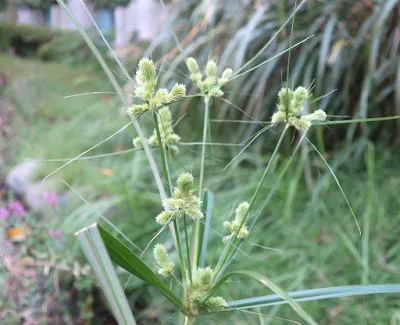I was photographing fruits on a Japanese dogwood tree and then these strange shaped leaves under the tree caught my eye. These are leaves of paper mulberry (Broussonetia papyrifera). The leaves are lobed with leaf margins sharply toothed, but they can be variable, like unlobed, round or heart-shaped, which is like Dendropanax trifidus leaves, which change from a lobed to an ovate shape.
 |
| Paper mulberry (Broussonetia papyrifera) カジノキ(梶の木) |
























